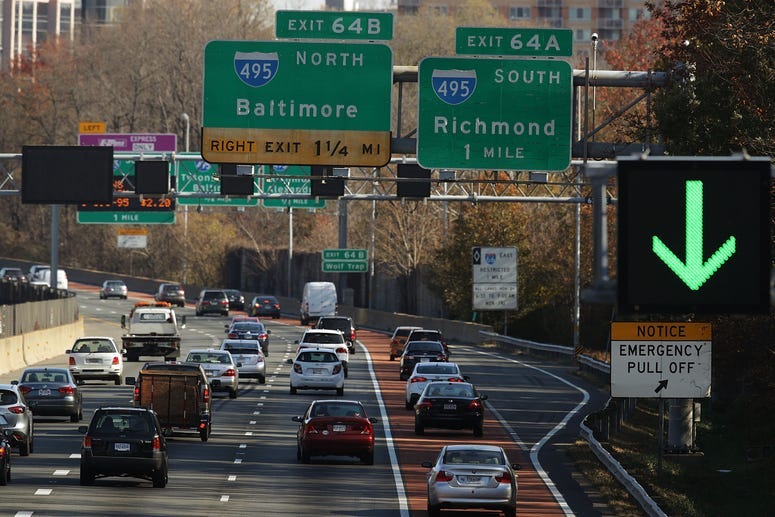
NEW YORK (1010 WINS) -- The first three episodes of this five-part series, "The Break Down: Road Work Ahead," detailed the state of disrepair on the nation’s roads and highways, how we got here -- and how much it will cost to fix.
But, motorists, brace yourself: You are expected to pick up much of the tab. Mike Manville, an associate professor of urban planning at UCLA, said it's the end of the "free ride," with sharp increases in the cost of driving and parking on city streets.
In Manhattan, congestion pricing begins next year, and it won’t be cheap: $11 or $12 to drive into the borough, below 60th Street, during peak hours. Predictably, drivers are not really happy about this. But traffic experts say that anger is a good thing, that it is the last straw for some drivers, who will look again at mass transit into the city.
It’s not a new concept, though. In 2016, Virginia launched variable tolling on heavily-used I-66 (below) just outside Washington, D.C. Carpoolers are still free, but lone road warriors pay a premium, with the cost fluctuating every few minutes. It’s not foolproof -- some motorists were hit with a $40 toll for a nine-mile stretch during peak time.

Part 1: THE OVERVIEW: Why America's infrastructure crisis is so problematic
Part 3: THE COST: How much will it cost to fix the nation's roads ... and who will pay for it?
Part 4: SOLUTIONS: How some cities, states are fixing their infrastructure crisis

Variable tolling provides an endless way to extract money from motorists. I-95 runs from Maine to Florida, and the 13 states along the way are looking at a unified toll system collecting mileage based user fees...the more you drive, the more you pay. In Los Angeles, new ideas include everything from using drones to inspect train tracks to building an aerial tram to get fans into Dodger Stadium.
Dramatic changes here, but baby steps when compared to other parts of the world.
Singapore is among the leaders, where fees for purchase, registration, parking and driving have priced the automobile out of the reach of most drivers. Singapore counters by providing a state of the art mass transit system, something many U.S. cities can only dream of.
The dream in many states isn't launching new projects, but upkeep of the roads and bridges they already have.
In Connecticut, Transportation Commissioner Joe Giulietti says infrastructure isn't a sexy topic, and maintenance is a tough sell to the public. Tolls are unpopular and there are few other options, so Giulietti has drawn a line in the asphalt: No new projects until existing roads and bridges are in good shape. Well, almost no new projects. An overpass spanning I-95 in Stamford was replaced over a couple of weekends using new technology. The new span was built off site, trucked in, the old bridge was lifted out and the new one swung into place. The state's Department of Transportation was so proud of it, they made a video (below).
It’s an example of the overall trend of a realization that the old way of doing things is no longer cutting it.
Peter Norton, an associate professor of history in the Department of Engineering at the University of Virginia says cities have kept artificially low what cars need ... .space. Space to park and drive, and upkeep on infrastructure. Norton says cars are inefficient because they don’t move a lot of people but use a lot of energy, and if all our resources go to supporting the automobile, well, that’s how we got into this jam. In urban areas, the way out of that jam has less to do with cars and more to do with mass transit, biking and old fashioned walking, which ideally creates a less congested, more connected city.
